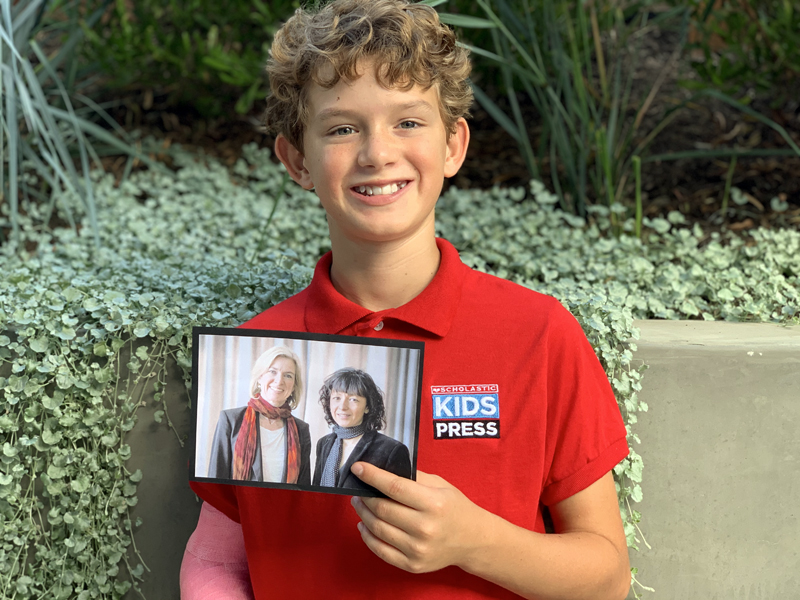KID REPORTERS’ NOTEBOOK
Women Win the Nobel in Chemistry


Quade holds a photo of biochemist Jennifer A. Doudna (left) and microbiologist Emmanuelle Charpentier, who were jointly awarded the 2020 Nobel Prize in Chemistry.
Biochemist Jennifer A. Doudna and microbiologist Emmanuelle Charpentier were recently awarded the 2020 Nobel Prize in Chemistry for their discovery of a tool that can edit the DNA code of life. They are the first women to receive the award jointly.
The scientists were recognized for creating a tool that can be compared to a tiny pair of scissors. Called the CRISPR/Cas9 genetic scissors, this biological gadget can help scientists cut and paste important biological functions in living beings.
“This great honor recognizes the history of CRISPR and the collaborative story of harnessing it into a profoundly powerful engineering technology that gives new hope and possibility to our society,” Doudna told a spokesperson at the University of California at Berkeley, where she is a chemistry professor. “What started as a curiosity‐driven, fundamental discovery project has now become the breakthrough strategy used by countless researchers working to help improve the human condition.”

Quade talks with science teacher Dawn Huffman via video.
A DISCOVERY THAT MAY CURE GENETIC DISORDERS
Many people are optimistic about the scientists’ discovery. “We have some genetic disorders that are pretty serious that run in our family,” said Dawn Huffman, an online science teacher at outschool.com. “I think that the research that’s behind this gene editing is going to help fight these diseases. It is really, really key to progress in the field of medicine, and there is a female behind it, which is even better. No offense to the males out there.”
Winning the Nobel is considered the highest honor in any field. It was established in 1895 by Alfred Nobel, an inventor and philanthropist from Sweden, and comes with a prize amount of 10 million Swedish Kronor ($1.12 million). The money is split between the laureates in chemistry, economic sciences, literature, medicine, physics, and physiology.
